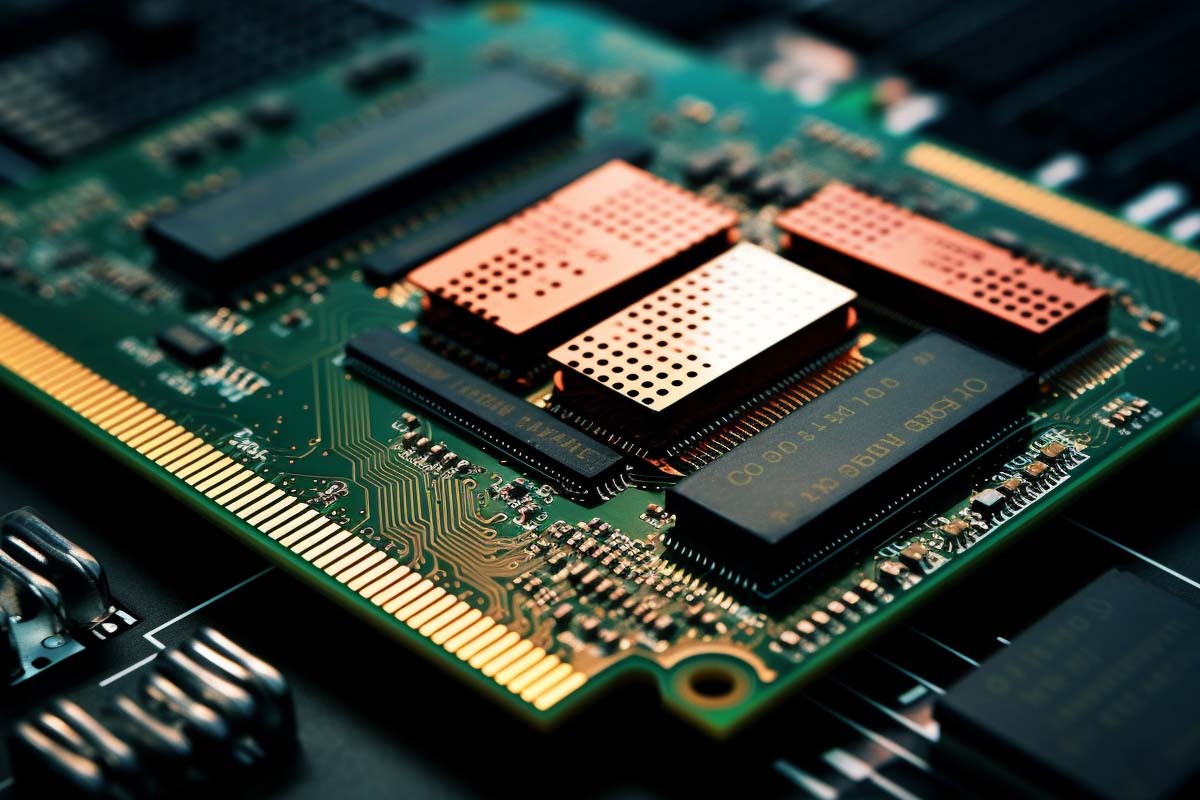Understanding the intricacies of your computer’s hardware, especially RAM is crucial for maximizing performance and ensuring compatibility. Among the most critical components are the various drive types and memory modules that your system supports. Whether you’re building a new PC from scratch or upgrading your current setup, knowing the nuances of these components can significantly impact your system’s efficiency and reliability.
Supporting Multiple Drive Types
Modern computers are versatile, supporting multiple drive types to cater to different storage needs and performance requirements. Solid State Drives (SSD), Hard Disk Drives (HDD), and Hybrid Drives (HHD) are common, each with unique benefits and limitations. While SSDs offer speed and durability, HDDs are celebrated for their large storage capacity and cost-effectiveness. Understanding the interface standards like SATA, NVMe, and PCIe is also crucial for ensuring that your drive is compatible with your motherboard.
Memory Types and Their Importance
Delving into system memory, several types are pivotal for various functions. RAM (Random Access Memory) is the cornerstone of system memory, directly influencing your computer’s speed and ability to multitask. DDR (Double Data Rate) RAM, with its iterations like DDR3 and DDR4, offers varying speeds and bandwidths, making compatibility and future-proofing important considerations when selecting RAM.
DDR3 and DDR4 are both types of RAM (Random Access Memory), used widely in computers and other devices to store temporary data for quick access by the processor. However, they have significant differences in performance, power consumption, and other features. Here’s a breakdown of the key differences between DDR3 and DDR4:
- Performance and Speed:
- DDR3: Offers speeds typically ranging from 800 MHz to 2133 MHz.
- DDR4: Starts at 2133 MHz and goes up to 3200 MHz or more, providing faster performance and higher data transfer rates.
- Power Consumption:
- DDR3: Operates at 1.5V (or 1.35V for DDR3L, the low-voltage version).
- DDR4: Operates at a lower voltage of 1.2V, leading to less power consumption and reduced heat generation, making it a more energy-efficient option.
- Capacity:
- DDR3: Maximum individual module size is usually up to 8 GB.
- DDR4: Supports larger module sizes, with capacities of 16 GB per DIMM or more, allowing for much greater total system memory.
- Physical Differences:
- Both DDR3 and DDR4 memory modules have different pin configurations and layouts, which makes them incompatible with each other’s sockets. DDR3 has 240 pins, while DDR4 has 288 pins.
- Latency:
- DDR3: Generally, has lower CAS (Column Address Strobe) latency, meaning it can access data more quickly.
- DDR4: Tends to have higher latency, but this is offset by the higher data rates and improved efficiency.
- Prefetch Buffer:
- DDR3: Has an 8n prefetch buffer.
- DDR4: Has an 8n prefetch buffer but also includes additional features like DBI (Data Bus Inversion) and CRC (Cyclic Redundancy Check) for improved reliability and signal integrity.
- Bank Groups:
- DDR3: Does not have the concept of bank groups.
- DDR4: Introduces bank groups, which allow for higher burst lengths and effective access, improving performance in certain scenarios.
When upgrading or building a system, it’s important to note that DDR3 and DDR4 are not interchangeable due to their different physical and electrical specifications. The choice between DDR3 and DDR4 will depend on the motherboard’s compatibility and the user’s performance and power consumption requirements. Generally, DDR4, being the newer technology, offers better performance and power efficiency, making it the preferred choice for modern systems.
DIMM and SO-DIMM Technologies
For desktops, DIMM (Dual Inline Memory Module) is the standard, whereas laptops typically use the smaller SO-DIMM (Small Outline DIMM). The physical difference is evident, but it’s the compatibility and purpose that set them apart. Understanding which module your system supports is crucial when upgrading or replacing your RAM.
DIMM (Dual Inline Memory Module) and SO-DIMM (Small Outline Dual Inline Memory Module) are both types of computer memory modules, but they differ in size, pin count, and intended use. Here’s a breakdown of the key differences between DIMM and SO-DIMM:
- Physical Size:
- DIMM: Larger in size, typically used in desktop computers, servers, and high-end workstations.
- SO-DIMM: Smaller and more compact, designed for use in laptops, small form factor (SFF) PCs, and other space-constrained devices.
- Pin Count:
- DIMM: Usually has more pins. For example, standard DDR4 DIMMs have 288 pins.
- SO-DIMM: Has fewer pins due to its smaller size. For instance, standard DDR4 SO-DIMMs have 260 pins.
- Usage:
- DIMM: Because of their larger size and often higher capacity, DIMMs are suitable for desktops and servers where space is not as much of a limiting factor and where higher performance and capacity might be required.
- SO-DIMM: Primarily used in laptops and other compact devices where space is limited and where there is a need to minimize the size and power consumption of components.
- Performance:
- In general, both DIMM and SO-DIMM can offer similar performance in terms of speed and latency, but DIMMs typically have higher maximum capacity options which can be beneficial for memory-intensive applications.
- Design:
- DIMM: Often equipped with heat spreaders or larger PCBs to help manage heat in high-performance scenarios.
- SO-DIMM: Lacks these features due to space constraints but is still designed to operate efficiently within the thermal envelope of laptops and smaller devices.
It’s important to note that DIMMs and SO-DIMMs are not interchangeable due to their different sizes and pin configurations. The choice between them is usually determined by the type of device you’re upgrading or building. Desktops and servers most often use DIMMs, while laptops and small form factor devices use SO-DIMMs.
Parity and ECC RAM: Ensuring Data Integrity
Advanced memory types like Parity and ECC (Error Correcting Code) RAM provide an additional layer of data integrity, crucial for servers and workstations where data corruption can have dire consequences. While ECC RAM is more expensive, its ability to detect and correct errors on the fly makes it an invaluable investment for critical systems.
Parity and ECC (Error Correcting Code) RAM are types of memory used to detect and sometimes correct errors that can occur during data processing, enhancing the reliability and integrity of the system. They are especially crucial in servers, workstations, and other systems where data accuracy is paramount. Here’s a detailed explanation of each:
Parity RAM
- Error Detection:
- Parity RAM adds a single bit to each byte of memory (8 bits), known as a parity bit, to make the total count of 1s either even (even parity) or odd (odd parity).
- When data is written to memory, the parity bit is set to either 1 or 0, depending on whether the parity is even or odd.
- Upon reading the data, the system recalculates the parity and compares it with the stored parity bit. If the parity doesn’t match, it indicates that a single-bit error has occurred.
- Limitations:
- Parity RAM can only detect single-bit errors and cannot correct them.
- If two bits are altered, parity RAM might not detect the error (this is called a two-bit error).
ECC RAM
- Error Detection and Correction:
- ECC RAM is more sophisticated than parity RAM. It can detect both single-bit and multi-bit errors and can correct single-bit errors on the fly.
- It uses additional bits (usually 7 or 8) for each 64-bit word, which are used to store an error-correcting code generated by polynomial algorithms.
- Working Mechanism:
- When data is written to memory, ECC RAM generates and stores ECC code for each block of data.
- On reading the data, the ECC code is recalculated and compared with the stored ECC code. If the codes don’t match, ECC RAM determines whether the discrepancy is due to an error.
- If a single-bit error is detected, ECC RAM automatically corrects the error in real-time, ensuring data integrity.
- Advantages:
- ECC RAM significantly increases system reliability. It’s essential in servers, scientific computing, and financial systems where data accuracy is crucial.
- It helps in preventing data corruption and system crashes, which can be caused by single-bit errors.
- Performance Impact:
- The additional processing to generate and check ECC codes can lead to a slight decrease in performance compared to non-ECC RAM.
- However, the enhanced reliability and error-correcting capabilities often outweigh the minor performance penalty, especially in critical systems.
- Cost and Compatibility:
- ECC RAM is generally more expensive than non-ECC RAM due to its added complexity.
- Not all CPUs and motherboards support ECC RAM. Compatibility should be checked before considering an upgrade or building a system with ECC RAM.
In summary, while both parity and ECC RAM are designed to detect errors, ECC RAM is more advanced with its ability to correct single-bit errors and detect multiple-bit errors, providing a higher level of data integrity and system stability. This makes ECC RAM a preferred choice for environments where data accuracy and reliability are of the utmost importance.
Navigating Memory Compatibility Issues
Compatibility is a key concern when upgrading memory. Factors such as maximum supported memory, the number of slots, and the supported frequencies must be considered. Using incompatible RAM can lead to system instability or failure to boot, underscoring the importance of consulting your motherboard’s documentation or a compatibility checker tool before purchasing new memory.
Discussing System Memory Installation
Installing or upgrading your system memory is a straightforward process, but it requires care and attention to detail. Ensuring that the RAM is compatible, properly aligning the modules with the slots, and handling the components with anti-static precautions are steps that cannot be overlooked. Additionally, understanding the concept of dual-channel memory can help optimize the performance of your RAM by installing pairs of identical memory modules.
In conclusion, whether it’s choosing the right drive type or understanding the nuances of system memory, each component plays a pivotal role in your computer’s performance and reliability. By staying informed about these technologies, you can make educated decisions that ensure compatibility and maximize the potential of your system.
Frequently Asked Questions About
























